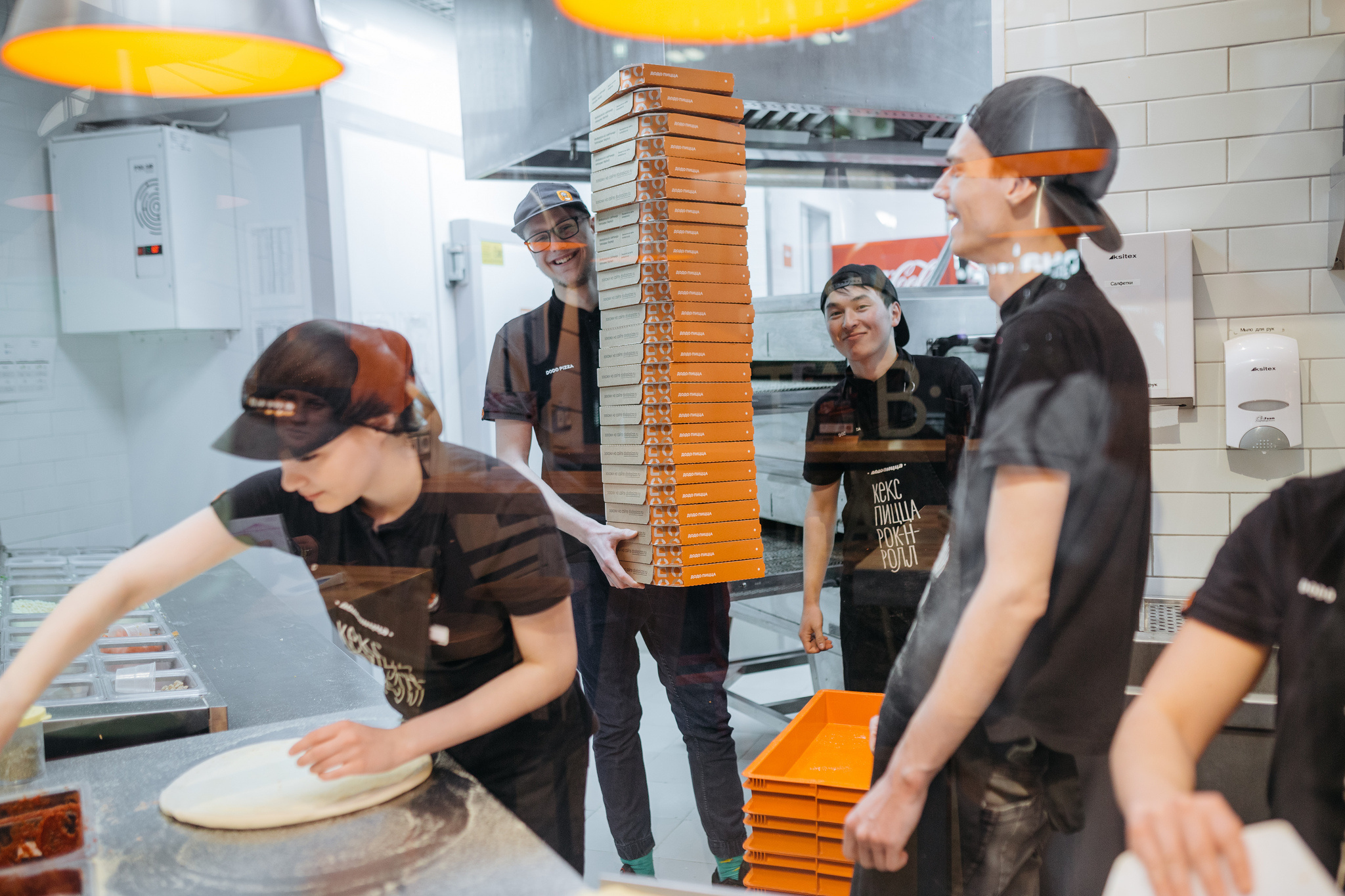
Why I Don’t Believe in Dark Kitchens
17 June 2019
The dark kitchen is a very popular idea nowadays—it’s getting a lot of investment hype. Dark kitchens are restaurants without a dining area, they do delivery only. Their rent is low, their kitchens combine several concepts at once, and their storage areas and courier service are shared between them. All this should result in cost savings and increased efficiency.
This year, I visited CloudKitchens in Los Angeles, one of Uber founder Travis Kalanick’s new ventures. In a low-rent neighborhood near the downtown business district, several concepts are gathered under one roof—pizza, Tex-Mex, salads, and burgers. It’s like WeWork, but for restaurants. Operators rent individual kitchen slots but share the infrastructure—deep freezers, fridges, a courier zone.
They’re working with American delivery aggregators—and there are a lot of those in the US. There are no well-known company names there, and one of the operators has got two no-name pizza brands, to be better represented by aggregators. This operator simply packages its pizzas into two different kinds of boxes. Many delivery aggregators are also opening such “restaurant coworking spaces.”
Perhaps this is a viable business model, but I don’t believe it will revolutionize the restaurant and food delivery market. I don’t believe there will be big chains operating only as dark kitchens. And why is that?
Imagine the food delivery market of the future. Let’s assume there are a lot of dark kitchen concepts. What is their key problem? They will be fully dependent on food delivery aggregators. They will have no brands, just ratings within the aggregators. And having a brand is very important. It’s an added value; it generates emotion and a connection with customers. Having a brand is a huge plus. But a dark kitchen operator will just have a rating and a price policy. So in the long run, all the advantages of a dark kitchen’s low costs will be nullified by the price war. A low market entry barrier, a varied choice of products and the transparency of the food delivery aggregators will result in huge competition.
The McDonald's brand was built on the efficient control of foot traffic.
Dodo Pizza also began as a dark kitchen. Our first pizzeria in Syktyvkar did delivery only, but we now consider dining area development to be our strategic goal. We want to be strong both as a delivery service and as a dining place. Dining areas mean face-to-face contact with customers, foot traffic, brand visibility offline and a new source of customers—other than the internet.
We want to make our delivery service more efficient not by virtue of cost savings, hiding our kitchens from people, and sharing overheads with other operators, but by establishing an additional offline sales channel.
I often hear the question, “Do you consider food delivery aggregators to be a threat? And what is Dodo Pizza’s strategy in the long run?”
I don’t consider aggregators to be a serious threat. In the market of the future there will be food delivery aggregators uniting a lot of small players, dark kitchens, and non-chain restaurants, as well as big chains that will use their own delivery services or collaborate with aggregators on special terms. Both have their own advantages. Small players are armed with creativity, uniqueness, and “craft production.” The strengths of the big players are economies of scale, the ability to create new products and ingredients, and consistency.
Let’s take Dodo Pizza as a typical branded chain; what competitive strengths does it have over food delivery aggregators?
- Convenience. We’re everywhere. Our business model is very resilient, so it can work in a commuter area as well as a business district, and in a small town as well as a big city—something we achieve through the delivery service/dining area balance, among other things. When you’re in a new area and you’re trying to use a food delivery aggregator, you don’t know in advance which restaurants are available to you, but in Russia you can order from Dodo Pizza almost everywhere. Our goal is to provide a consistent product and service quality in all our pizzerias, and that’s how we gain our customers’ trust and make our service more convenient. Accessibility and convenience are key advantages for a food service company.
- Products and a uniform menu. Aggregators can advertise only their service, but we can promote our products—for example, seasonal pizzas and other offers—and we can do that on a national level via TV; so our products will be available all over the country.
- We control the value chain entirely, from product design and ingredient production to kitchen processes and “the last mile,” but an aggregator controls “the last mile” only.
So what is our long-term strategy for format development?
We’re going to work on a hybrid model: that is, small pizzerias with high foot traffic and high rent rates, plus a pizza delivery service, with a mobile app as the main sales channel, able to process delivery and dining area orders alike.
Our long-term goal is to switch to a digitalized order process completely and engage customers via offline traffic, because online traffic will be controlled by the aggregators.
Our strategy is offline development. It will allow us to strengthen both online sales and delivery, as it will increase our brand visibility and tangibility, and also narrow our delivery areas. On the one hand, this model will stand on two feet, so to speak, having two revenue streams, and on the other hand, narrowing delivery areas will help us speed up delivery. And that, in turn, will have a positive effect on customer loyalty, the number of orders, and delivery profitability, because the smaller the delivery area, the more deliveries can be done in an hour.
